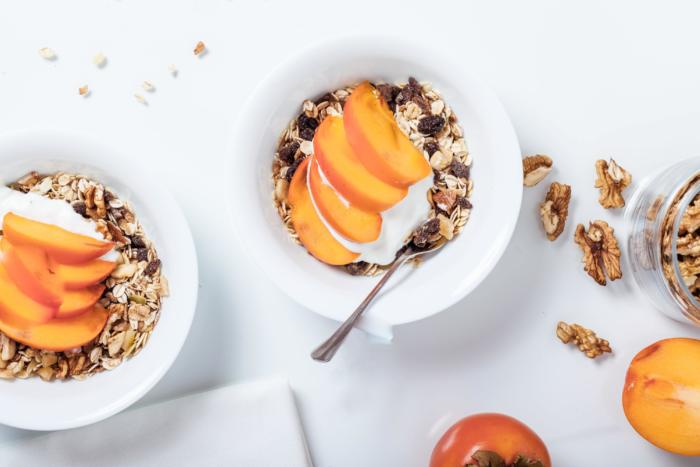As a nation we eat our way through over 22 million cans of Watties baked beans a year but According to the New Zealand Nutrition Foundation, we are eating less than half our recommended daily intake which is just 25g fibre each day for women and 30g fibre each day for men.
We are constantly being told by Doctors and Health Officials to eat more fibre and to keep regular bowel movements.
What are the best fibre rich foods to eat?
And what happens if we eat too much of it?
Back in the 1970s, the late Dr. Denis Burkitt wrote an international bestseller called “Don’t forget Fiber in your diet.” In the book, he compared the pattern of diseases in African hospitals with Western diseases. He discovered many Western diseases which were rare in Africa, were the result of our diet and lifestyle.
The standard western diet is high in animal products such as meat, cheese and milk. Most of us don’t eat enough fibre-rich foods which contain powerful protective agents, such as antioxidants and phytochemicals which protect us from bowel disorders and heart disease.
Fibre can also help weight control making us feel fuller for longer and help with the management of diseases such as diabetes and some cancers.
The good news is just by making a few daily adjustments we can all increase our fibre consumption and improve the health of our bowels.
In New Zealand, we obtain most of our fibre from five main sources: bread, vegetables, fruit, potatoes/kumara and breakfast cereals.
Fibre can only be found in plant products, in two forms – soluble and insoluble.
Soluble fibre like oats, legumes, vegetables and fruits acts like a sponge absorbing water and making the bowel contents softer and able to move through the system more easily. Soluble fibre also helps lower blood cholesterol and improves blood glucose control.
Insoluble fibre like bread, wholegrain cereals, whole wheat pasta and corn acts as a ‘bulking agent’ which, with soluble fibre, helps to keep us regular. This fibre picks up waste along the way and helps expel everything from the body.
This is great for people with conditions such as constipation, diverticular disease and haemorrhoids.
Four tips to add extra fibre to your diet:
Tip #1:
Aim for at least 5 or more servings of fruit and vegetables each day. Leave the skin on, as it contains much of the fibre. Fruit and vegetable juices contain little or no fibre.
Approximate grams of fiber for each standard size of the following fruits and vegetables: Pears(5.5g), Parsnip (5.8g), Broccoli (2.4g cup), Brussels Sprouts (0.5g each), Carrots (2.9g per 100g serve), spinach (7.5g bunch raw).
Tip #2:
Choose wholegrain varieties of bread, cereals, rice and pasta. When baking, try substituting half of the white flour with whole meal flour.
Approximate grams of fibre in cooked long-grain brown rice (1.8 g per 100g serve).
Tip #3:
High-fibre breakfast options include porridge or muesli. Increase the fibre further by adding oat bran or wheatgerm, nuts, seeds (sunflower, sesame, pumpkin) and fruit (fresh, canned).
Approximate grams of fibre in the following: Quinoa (5.2 g per one-cup serving cooked), Flax Seeds( 1.9g per teaspoon serving), Chia Seeds ( 10.6g per ounce).
Tip #4:
Try adding chickpeas, kidney beans or lentils to soups, casseroles.
Approximate grams of fibre in the following: Amaranth (5.2 g per one-cup serving), Red lentils (4g of fibre per half-cup serving, before cooking), Cooked black beans (15g per one-cup serving), White beans (18.6g per one-cup serving).
If you are eating more fibre-rich foods, drink more water than usual, as fibre absorbs water in the body. The more liquids you consume the easier it is to pass everything through the system.
What happens if you eat too much fibre?
Believe it or not, there is such a thing as consumption of too much fibre which can give you some unwanted side effects such as wind, bloating and over active bowels.
Add more fibre to your diet slowly to get your body used to it. Digestive discomfort may mean you need to cut back a bit. Try and stick to the NZ recommended fibre levels per day (25g for women and 30g for men).
High-fibre diets are not recommended for young (preschool) children as they can be too filling, preventing young children eating enough food to meet their daily vitamin and mineral needs.
If you have any concerns about your health or have been advised to have a low fibre diet, ask your Doctor for advice before increasing your fibre intake.
Remember, when it comes to food, moderation is key.
Eat a well-balanced diet and listen to your body.

